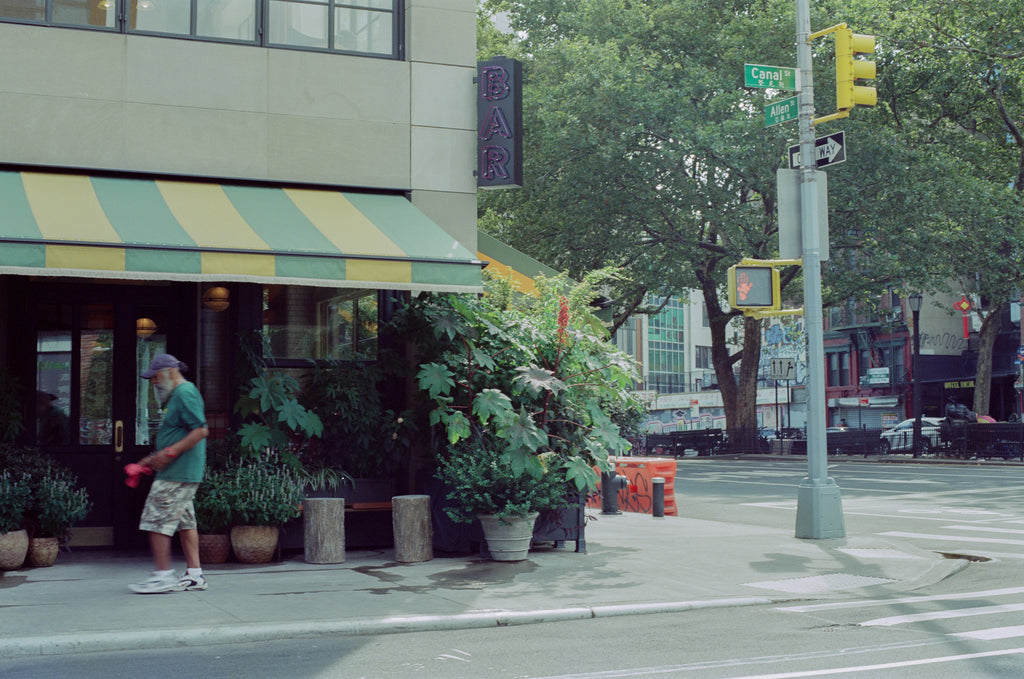These days, finding color negative film, especially in 35mm format, can be challenging. As a result, many people have been using motion picture film, such as Vision 3, for still photography. Vision 3 is often called "ECN-2 film," which stands for Eastman Color Negative, the process used to develop motion picture film. While Kodak is currently the main player in the game, other manufacturers like Fuji and Agfa used to produce motion picture film as well. Nowadays, several companies such as FPP, QWD, Silbersalz, and even CineStill sell motion picture film, but it is essentially bulk-loaded Kodak Vision 3. Kodak still makes motion picture film, and it may be a long time before it is discontinued since it is still being used by many directors of photography and in Hollywood.
Motion picture film is available in various formats such as 8mm, 16mm, 35mm, and 65mm. Although 65mm ECN-2 film can be shot in medium format cameras by loading it onto 120 spools, 35mm is the format that has recently been creating a buzz in the film photography community. The 35mm motion picture film comes in 400-foot rolls, which can be cut down and loaded into bulk loaders and then into reusable canisters to shoot with a still camera. The benefit of using motion picture film is that it's cheaper, readily available, and arguably the best-looking color film.
When shooting motion picture film for still photography, it is always best to overexpose by one stop. This allows for more shadow detail, and since Vision 3 has an extended highlight latitude, you don't need to worry about blowing out the highlights.
It's not recommended to shoot expired motion picture film. Therefore, this article will focus on Kodak's Vision 3 since it's still being produced. Vision 3 comes in four film stocks: 50D, 250D, 200T, and 500T. The letters "D" and "T" represent the color temperature for which the film is made. "D" stands for daylight film, and "T" stands for tungsten light. Daylight film can be used at night with an 80A filter, while tungsten film can be used in the day with an 85B filter. However, the film must be overexposed by one stop to compensate for the light loss from the filters. Using a filter isn't strictly necessary since color correction can always be done in post-processing.

All Vision 3 films are known for their flat profile, large dynamic range, clean shadows, and superior color gradation. However, what sets the 50D apart is its fine grain. It's the finest grain film available and is perfect for bright outdoor conditions with excellent color rendition.

The 250D is a phenomenal film stock and my favorite to shoot after the Vision 3 500T. The 250D has a faster film speed than the 50D, making it more versatile, and produces some of the best colors straight out of the camera. However, its colors can shift on overcast days and in low light conditions, but this can easily be corrected in post-processing. All daylight balanced film shifts a little more towards yellow/green, which is most noticeable in the 250D and gives it its cinematic look.

200T is an excellent film stock that works best in studio or controlled tungsten lighting situations where a wider aperture is desired. When exposed correctly, it has fine grain and renders shadows exceptionally well. However, it was primarily designed for controlled lighting situations and is not recommended for those in the still photography community shooting handheld in low light conditions. As a result, most people tend to prefer its counterpart, 500T.

In my opinion, Kodak's Vision 3 500T is one of the best film stocks ever made. It boasts a wide dynamic range, making it suitable for shooting in any environment, and has a unique color profile. Despite being a higher-speed tungsten-balanced film, it produces minimal grain, comparable to or even less than Portra 400. It's particularly great for nighttime photography and doesn't require an 85-B filter to produce excellent color in daylight. If you're looking for an all-around great film, this is the one for you!
If you've shot your first roll of motion picture film for still photography and are wondering how to get it processed, you can send it to us! We offer true ECN-2 processing according to Kodak's instructions. You can checkout for ECN-2 processing on our site here.
In conclusion, using motion picture film for still photography is an excellent way to achieve unique and stunning results. While color negative film can be difficult to come by these days, motion picture film is readily available and often more affordable. Kodak's Vision 3 film stocks are particularly popular among photographers, with 50D offering fine grain and exceptional color rendition, 250D providing versatility and beautiful colors, 200T being ideal for controlled lighting situations, and 500T having a wide dynamic range and distinctive color profile. Remember to overexpose by one stop and avoid shooting expired film for best results. With proper handling and processing, motion picture film can produce breathtaking images that stand out from the crowd.

